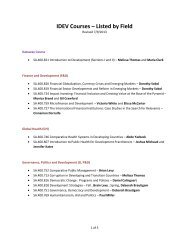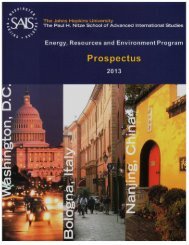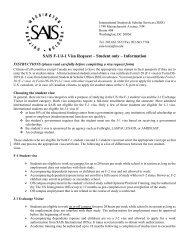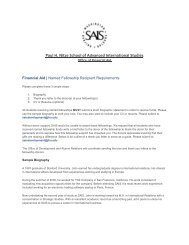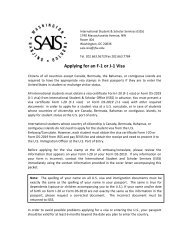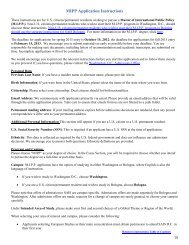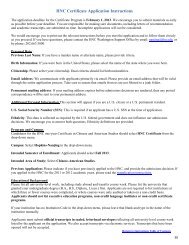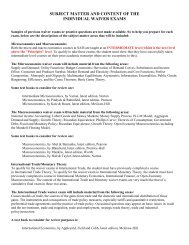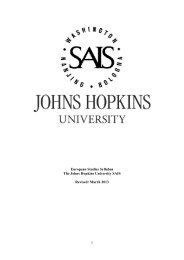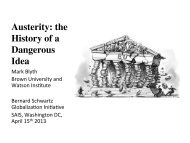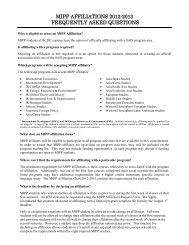Tunisia: Understanding Conflict 2012 - Johns Hopkins School of ...
Tunisia: Understanding Conflict 2012 - Johns Hopkins School of ...
Tunisia: Understanding Conflict 2012 - Johns Hopkins School of ...
Create successful ePaper yourself
Turn your PDF publications into a flip-book with our unique Google optimized e-Paper software.
desires <strong>of</strong> the opposition. Tellingly, in her 1998 book Women, the State and Political<br />
Liberalization: Middle Eastern and North African Experience, Laurie Brand closes her<br />
analysis <strong>of</strong> <strong>Tunisia</strong> with these words:<br />
Many women are unwilling to criticize the regime’s approach. They have<br />
been pr<strong>of</strong>oundly affected by developments in Algeria and believe that<br />
their choice is between the current <strong>Tunisia</strong>n government and the<br />
Islamists…Yet as long as the economy appears to perform well and the<br />
country is stable, many <strong>Tunisia</strong>ns, women and men, will be unwilling to<br />
risk the rise <strong>of</strong> Islamist influence and the losses they believe it would<br />
bring, by pushing for a greater opening <strong>of</strong> the system. (Brand 1998, 246)<br />
It seems that such a time has come. Thus, one cannot consider the role <strong>of</strong> debates about<br />
women’s rights in the revolution, not to mention the future <strong>of</strong> women’s rights in the<br />
country, without first looking back to consider their establishment and evolution—and<br />
thus the framework within which women’s rights has been defined.<br />
Once one has considered the historical framework <strong>of</strong> women’s rights, the current<br />
role <strong>of</strong> women’s rights in the debate about the country’s future becomes more<br />
comprehensible. For one, the debate about women is not front and center, but rather is<br />
taking place through conversations about other issues that have arisen since the<br />
revolution: debates about the right <strong>of</strong> women to wear the niqab 10 in universities, the right<br />
<strong>of</strong> an executive to show Persepolis on national television, the government’s response to<br />
salafists’ actions in rural areas like Sajnan, and the ambiguity <strong>of</strong> Ennahdha’s position on<br />
certain aspects <strong>of</strong> the CPS. Moreover, because women’s rights have been at the heart <strong>of</strong><br />
the debate between Islamists and secularists for some time, many <strong>of</strong> the individuals we<br />
interviewed linked (either implicitly or explicitly) debates about secularism versus<br />
conservatism with questions about the role <strong>of</strong> women. In general, liberals argue that the<br />
conservatism at the root <strong>of</strong> Ennahdha threatens women’s rights, and Ennahdha’s “double<br />
speak” is pro<strong>of</strong> <strong>of</strong> the imminence <strong>of</strong> the threat, while members and friends <strong>of</strong> Ennahdha<br />
10 The “niqab” refers to the religious garment that covers a woman’s hair and face. The garment<br />
that covers just a woman’s hair will be referred to as the “hijab.”<br />
64



